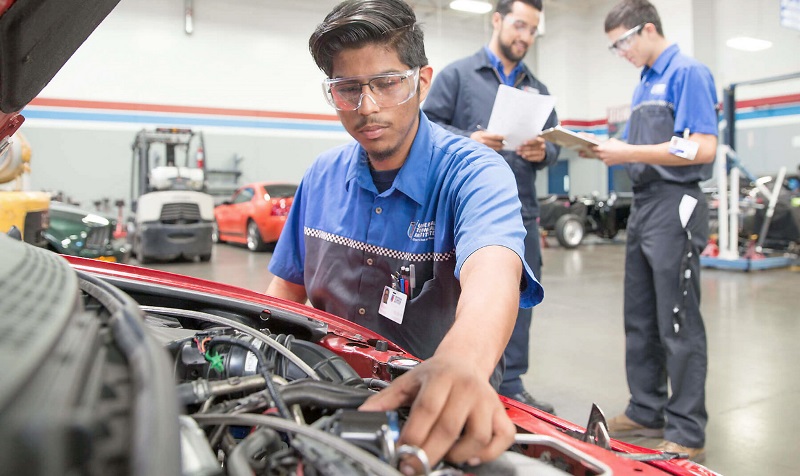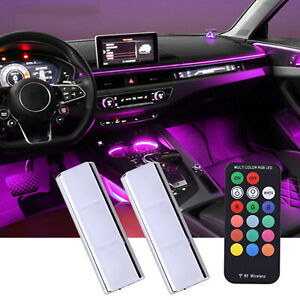
Accessories for your car are essential to driving. A portable power bank and blind-spot lights can make your car safer. You can also install Tissue box or holder to keep the tissues at hand. You might also be interested in these car accessories. These accessories will make you fall in love with them. They're practical and will make driving more pleasant. These accessories are made to make driving more enjoyable.
Blind-spot mirrors
Blind-spot mirrors are a must for drivers. These will help to prevent their eyes from becoming distracted by cars hiding in their blind spots. Recent research has shown that 840,000 car crashes are the result of driver inattention and insufficient surveillance. Blind-spot mirrors in vehicles could have saved these incidents. These mirrors can help you avoid a fender-bender by allowing you to check your blind spots before you change lanes.

Portable power bank
A portable power bank for your car has many benefits that outweigh its drawbacks. Portable power banks are designed to provide an emergency power source. They can charge your laptop and last much longer than the battery in your car. Portable power banks are capable of charging your laptop as well as powering small appliances such radios, lamps and other small devices. Portable power banks will not only save your money, but they can also help protect the environment.
Tissue case
The best accessories for your car's tissue box should be easy to attach and remove. The best ones have straps and buckles to help you secure the box. These can be placed right in the middle of the car's headrests or armrests. This will ensure that everyone can reach the box easily. If you have children, you may also want to buy a holder that holds multiple tissues. You want one that is easy-to-clean and affordable.
Tissue holder
A Tissue holder for car allows you to keep tissues within easy reach while driving. It clips to the seat and visor making it easy to find tissues. The holder is easy-to-open and to refill. It also doesn't obstruct the driver. The holder can be used on boats, RVs, and other vehicles. Its sleek design allows it to fit perfectly into the car's interior.

Seat covers
Sit covers are a strong, stylish accessory for your car. You can choose from two-piece sets. The one that slips on top of the headrests is the best. They are suitable for almost any car make or model. Some seat covers come with an unlimited warranty while others offer a 30-day return policy. These accessories can be washed with a washing machine.
FAQ
What length is an automotive mechanic apprenticeship?
It takes three years to complete an apprenticeship as an automotive mechanic. It includes two years of school and two years as an apprentice. The first year of training is spent in the trade. This includes theory and practical skills as well as safety procedures. You will also learn to use tools efficiently and safely during this period. After the first year, a second year will be spent on-thejob training. This year you'll get experience in different trades. These years will offer you the opportunity to attend formal classes.
The last year of your program will be spent earning qualifications and becoming certified. These include NVQs, which are obtained after passing industry-specific exams. The HNCs (Higher National Certificates), on the other hand, cover general subjects like customer service and management. City & Guilds certificates can be obtained for individuals who want to learn certain trades.
How can I fix my car as a hobby?
Take up a hobby in car repair if you have an interest. You can repair them, buy their parts, sell them, or just have fun with them. If you are looking for something more, it would be an excellent hobby.
It's not an easy task to make this a full-time job. It requires a lot of hard work and dedication. You'll also need to invest a lot.
So unless you have a good reason for wanting to get involved with cars, then it might be best to leave it alone.
What qualifications do I need to become a mechanic?
A series of tests is required to be a mechanic. These include:
-
A general knowledge test
-
A practical exam
-
An apprenticeship test
These tests are meant to help you grasp the fundamentals of mechanical engineering and physics, before you begin your journey as a mechanic.
These tests will allow you to be a mechanic once you have passed them. You will still need to complete an apprenticeship. This will involve training in your trade.
You'll need to attend classes and workshops to learn everything you need to know about repairing vehicles. It will be necessary to work alongside experienced mechanics.
For mechanic success, you'll need to be focused and meticulous. Vehicle repairs require you to be very attentive.
To be a successful mechanic, patience and perseverance are essential. If you don't like to follow instructions, then this may not be the right career path for you.
This job is for you if you are passionate about cars and love fixing them.
Statistics
- There were 749,900 jobs available for automotive service technicians and mechanics in 2016, which is expected to grow by six percent through 2026. (jobhero.com)
- 52% of Mechanics in the United States think their salaries are enough for the cost of living in their area. (indeed.com)
- According to the BLS, the median annual salary for automotive service technicians and mechanics in the United States was $44,050 in May 2020. (uti.edu)
External Links
How To
How to properly diagnose your car for repair
First, look at the symptoms of your car to determine if it needs repair. Next, you can follow these steps in order to diagnose your car.
-
Check engine lights. Make sure to check all dashboard indicators like the engine light indicator (oil pressure gauge), the battery indicator (battery light indicator), and the RPM indicator (rpm gauge). You may have a problem with your vehicle if any of the indicators are flashing for more than a few days.
-
Examine the treads of the tires. Tires can become worn and cause problems in handling and braking. You should also inspect the wheel treads. They should look clean and be smooth. The best way to do this is to remove the wheels and take them off. You can check the tread wear with a flashlight.
-
Monitor the level and consistency of your brake fluid. Keep track of the brake fluid level in your vehicle. This helps ensure that your brakes operate properly. Your brakes may fail if the brake fluid level drops.
-
Make sure to test the suspension system. Most vehicles have a suspension system that absorbs shocks and vibrations. This suspension system provides greater control and smoother acceleration and deceleration. It might feel uncontrollable or wobbly if your vehicle is suffering from a suspension problem. To test whether your vehicle has a suspension issue, try putting weight on the front or rear axle and observe the movement.
-
Examine the steering column. The steering column is used to link the steering wheel with the rest of vehicle's components. Many accidents can cause damage to steering columns. It is recommended to replace any steering column that feels loose, or shakey.
-
Pay close attention to the exhaust tube. Exhaust pipes help move gases from the combustion chamber to the atmosphere. Exhaust pipes that are cracked or leaking can allow harmful fumes to enter your cabin. Additionally, your tailpipe should be fixed immediately if it is bent.
-
Take a look at the underside of your hood. If you see anything unusual, take a look under the hood. There could be fluid leaking from your engine. Also, professional technicians should be called if you detect an unusual smell coming out of your engine compartment.
-
Make sure to check the air filter. The vehicle's outside environment may cause the air filter to collect dust and debris. A dirty air filter causes your vehicle to run poorly. Replace your air filter regularly.
-
The fan belt should be checked. Your vehicle's fanbel connects the engine and transmission. If the fanbel breaks, your engine won't turn. The process of replacing the belt is straightforward. You only need a screwdriver or pliers to replace your belt.
-
Check the radiator hose and hoses. The radiator hose is used to carry water from the radiator to your engine. If it becomes cracked or damaged, it can leak hot liquid onto the engine. You only need a pair of needle-nose pliers and a small wire brush to repair the hose.
-
Make sure you have the windshield wipers checked. Windshield wipers work by using electricity to remove rain and snow. If they stop working, they could leave streaks on your window glass. The solution is to change the washer fluid.
-
The battery cables should be checked. The battery cables supply power to your car's electrical systems. Before you change batteries, disconnect the positive cable. Failure to do so can damage your alternator.
-
Check the headlights. The headlights provide illumination for the road ahead. Poor visibility can result if the headlights don't function properly. Inspect the bulbs for signs of burnt out.
-
Pay attention to the lights. You can warn other drivers if you approach them at night. If one doesn't work, it could distract you and lead to an accident.
-
Inspect your brakes. Before you collide with another vehicle, brakes will slow down the car. You could lose control of the car and cause a crash if they don't work properly.
-
Make sure to change the oil. Your engine will stay lubricated by the oil. It helps prevent metal parts from wearing out too quickly. Changing the oil every month is recommended.